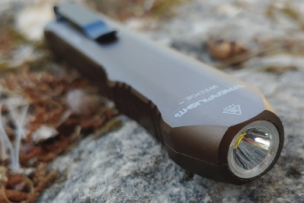Your enemy this winter:
- Inadequate layers of protection.
- Not knowing all the protection that is available.
- Insufficient planning for extreme weather.
- Always unpredictable weather patterns.
THE LIMITS OF NATURAL BODY PROTECTION
Warm protective clothing is important because we don’t have a lot of fatty tissue or animal-like fur coats above our shoulders to keep body heat inside us, where it protects vital organs against the cold and is our natural winter defense mechanism. Several layers of skin, nerve endings, sweat glands and hair follicles cover our heads. Our ears, especially the ear lobes, and nose are comprised mostly of cartilage and do not have insulating fat. Our necks are a sensitive collection of bones, nerves, glands and cartilage. Ever get a tattoo on your neck? You know the feeling…
When we’re outside on cold days or exposed to cold temperatures indoors, those nerve endings and lack of natural body protection are why our head, ears, face, nose and neck feel that sting fast, along with our fingers and toes. It’s why they are particularly vulnerable to frostbite. Just not a lot of fat and muscle there.
Another risk is at play here: knifing cold, wind, ice and hail storms, miserable sleet and driving snow are obvious distractions that numb our minds and senses from the task at hand. Concentration, focus and coordination can all succumb to extreme weather overload.
COLD WEATHER PUTS OUTDOOR & INDOOR WORKERS AT RISK
Lacking warmth and comfort can lead to the following consequences:
- Inadvertently putting ourselves in the line of fire.
- Rushing to get a job done.
- Taking shortcuts to get ourselves back inside.
- Getting frustrated and cursing the elements while trying to complete a task.
- Becoming fatigued more quickly bucking strong winds, fighting through snow, gingerly picking our way through ice.
We’re talking about a mind-body interplay here. These mental distractions are compounded by physical threats. Once our body temperature drops below 95 degrees, we start to shiver and enter the early stages of hypothermia. Subtle signs and symptoms come on so gradually you may not even notice it: first shivering, then maybe slurred speech, fumbling around, confusion and extreme drowsiness.
It doesn’t have to be at subzero temps, either. You can suffer hypothermia at 32 degrees; add devilish wind chill and you can be shivering in minutes. Fortunately, awareness and quick intervention prevent most cases of hypothermia from becoming fatal. About 1,500 people die each year of hypothermia, according to the Centers for Disease Control and Prevention (CDC).
Frostbite is more common. Fingers, toes, nose, ears, cheeks and chin are most vulnerable to frostbite. Because of skin numbness, you may not realize you have frostbite until someone points it out. Severe frostbite is often associated with hypothermia.
WINTER HEADWEAR: HOW TO KEEP HEAD WARM IN WINTER
Fortunately, you have many options to keep your head warm, your ears warm, your face and nose warm, and your neck warm in the winter months. Keeping them dry is also important. Moisture wicking technology today keeps wearers comfortably moisture-free. You can layer insulating products to increase your body warmth and keep that essential core body heat inside you.
And let’s set the record straight: you don’t lose most body heat through your head. Your head is not your body’s skin and bones chimney. That age-old myth was debunked by scientists in a 2008 article in the British Medical Journal. Still, many outdoor workers start with the crown of PPE: donning the iconic hard hat and safety helmet. This is often the starting point for preparing to keep your head warm in winter.
Hard hats and safety helmets protect against “object-generated impact”—tools dropped from heights, falling debris and other flying objects.
Bump caps protect against impacts generated by the worker, such as bumping into overhead pipes or low ceilings. They are less obtrusive and fit closer to the head than a hard hat.
Hard hats and helmets provide outer shell protection, and you have a wide range of options for liners and layers of warmth and comfort to complement that protection.
TYPES OF WINTER HATS
Your options for keeping the head warm in winter include:
Two- and three-layer hard hat liners, many shoulder length, that cover the head, ears and neck. An elastic fit keeps the heat in and the cold out. Lightweight liners fit comfortably under a hard hat without feeling too bulky.
Thermal mouthpieces attach to Thermal Liners and have either breathable neoprene or cotton shells.
Winter baseball caps with ear flaps come in models that are bump cap compatible.
Full face stretch caps wrap around the brim of a helmet and cover the face, ears, neck, nose—everything but the eyes.
Beanie caps are available with or without a bump cap.
Continue reading this blog in its entirety to learn about other headwear options to keep you warm this winter.
Previously Featured on Ergodyne's blog.





Talk to Us!
Leave a reply
Your email address will not be published. Required fields are marked *